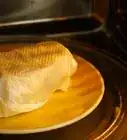This article was co-authored by John Burson and by wikiHow staff writer, Jessica Gibson. John Burson is a Certified Nutritionist, Licensed Herbalist, and Certified Personal Trainer. With over 25 years of experience, John specializes in helping clients lose weight and live healthier lives. John graduated magna cum laude and received a Bachelor’s degree in Business and Marketing from Grand Canyon University. He has also earned Thumbtack Top Pro honos for three consecutive years.
This article has been viewed 108,075 times.
No one enjoys reaching into a bowl of popcorn to find a soggy or chewy piece. Fortunately, you can make a few little changes to end up with popcorn that stays fluffy and crisp, even days after you popped it. To make popcorn that stays fresh, store the plain popcorn in an airtight container and season it just before you're ready to enjoy it.
Steps
Storing Homemade Popcorn
-
1Pop a batch of popcorn and don't season it. You can pop kernels on the stove or in the microwave, but don't drizzle the popcorn with butter, sprinkle it with salt, or add flavorings. These can make your popcorn soggy or chewy.
- If you want to eat healthier, prepare your popcorn with water instead of oil.
Tip: Although you can make a bag of store bought microwave popcorn that's flavored, it won't stay fresh for more than a few days.
-
2Let the popcorn cool completely. If you put hot or warm popcorn into a storage container, you'll trap moisture in the container that can make the popcorn become soggy. Ensure that the popcorn is completely cooled before you store it.[1]
- Popcorn doesn't take very long to cool. If you're in a hurry, you can spread it out on baking sheets to cool faster.
Advertisement -
3Pack the popcorn into an airtight container. Once the popcorn has cooled, put it into a glass or plastic container. Try not to use a container that's too large or the popcorn will stale faster. If you can, fill the container to the top so there's not as much air in it.
- If you don't have a jar or rigid storage container, use a sealable plastic bag. Remove all of the air before closing the bag.
-
4Store the popcorn at room temperature for up to 1 to 2 weeks. If you haven't added salt, butter, or seasoning to the popcorn, it will keep for at least 1 week. Avoid refrigerating the popcorn because this will introduce moisture that can make the popcorn stale.[2]
- If you're storing leftover store bought popcorn that you made, check it every few days to see if it's still fresh. Since store bought popcorn is already covered in flavoring, it may become chewy within a few days.
-
5Flavor the popcorn just before you eat it. For classic popcorn, toss it with melted butter and salt. If you're feeling more adventurous, melt a little honey with the butter before you drizzle it over. To make savory and spicy popcorn, sprinkle a little chili powder and nutritional yeast over it. The nutritional yeast will give the popcorn a slightly cheesy flavor.[3]
- If you don't mind messy popcorn, you can mix the popcorn with caramel or chocolate sauce.
- To make your seasoned popcorn healthier, use herbal condiments, balsamic vinegar, pickles, or peppers instead of butter, sweeteners, and oils.
Reviving Stale Popcorn
-
1Preheat the oven to 250 °F (121 °C) and spread the popcorn on a sheet. Get out a rimmed baking sheet so the popcorn won't slide off it. Then, put as much stale popcorn as you like on it.[4]
- Arrange the popcorn so it's in a single layer.
Tip: If you need to revive a lot of stale popcorn, reheat it in batches.
-
2Heat the popcorn for 5 minutes. Put the baking sheet into the preheated oven and leave it so it crisps up. You can check the popcorn after 5 minutes to see if it's not soggy or chewy anymore.[5]
- If the popcorn is still a little stale, heat it for 1 more minute and check it again.
-
3Season the popcorn before you eat it. If your popcorn is plain, toss it with melted butter and salt or your choice of seasonings. You could sprinkle cheesy powder, curry powder, or cinnamon sugar, for example.[6]
- Avoid storing the popcorn once you season it since they'll make the popcorn become soggy again.
Making Plain Stovetop Popcorn
-
1Pour the oil into a heavy pan and add 2 popcorn kernels. Place the heavy pan on the stove and pour 2 tablespoons (30 ml) of canola or vegetable oil into it. Put 2 of the popcorn kernels into the pan and put the lid on.[7]
- If you use a pan with a glass lid, you'll be able to see when the kernels pop. If you don't have a glass lid, you'll need to listen for the kernels to pop.
-
2Turn the burner to medium-high and wait for a kernel to pop. You'll know the oil is hot enough when you see or hear at least 1 of the kernels pop. Avoid frequently lifting the lid to check the kernels because heat will escape from the pan.[8]
-
3Add 1/2 cup (105 g) of popcorn kernels and put the lid back on the pan. Carefully lift the lid and add the kernels. Then, swirl the pan gently so the kernels are coated in the oil and put the lid back on.[9]
Tip: If you'd like to make more popcorn, cook the popcorn in batches instead of adding more kernels to the pan.
-
4Shake the pan over the burner for 2 to 4 minutes so all of the kernels pop. Swirl the pan gently to keep the kernels moving so they don't burn. You'll hear the kernels begin to pop within 1 to 2 minutes. Then, it will take another 1 to 2 minutes for all of the kernels to pop.[10]
-
5Remove the pan when you hear 3 seconds between each pop. You shouldn't hear very many kernels sliding around the pan if you give it a gentle shake. The popping should also slow down once most of the kernels have popped. Turn off the burner when you hear 1 pop about every 3 seconds.[11]
- Look out for pieces of popcorn that might pop out of the pan as you remove it.
Expert Q&A
-
QuestionIs popcorn OK to eat everyday?
 John BursonJohn Burson is a Certified Nutritionist, Licensed Herbalist, and Certified Personal Trainer. With over 25 years of experience, John specializes in helping clients lose weight and live healthier lives. John graduated magna cum laude and received a Bachelor’s degree in Business and Marketing from Grand Canyon University. He has also earned Thumbtack Top Pro honos for three consecutive years.
John BursonJohn Burson is a Certified Nutritionist, Licensed Herbalist, and Certified Personal Trainer. With over 25 years of experience, John specializes in helping clients lose weight and live healthier lives. John graduated magna cum laude and received a Bachelor’s degree in Business and Marketing from Grand Canyon University. He has also earned Thumbtack Top Pro honos for three consecutive years.
Certified Nutritionist Sure! By itself, popcorn is a very healthy snack. There’s evidence that it can even lower the risk of heart disease and diabetes. That said, remember that everything must be consumed with moderation.
Sure! By itself, popcorn is a very healthy snack. There’s evidence that it can even lower the risk of heart disease and diabetes. That said, remember that everything must be consumed with moderation.
Warnings
- Although you can put the popcorn into the freezer, this will cause the popcorn to become hard even after you defrost it.⧼thumbs_response⧽
- Avoid microwaving homemade popcorn in brown bags. The bags are usually made with recycled material that can catch fire in your microwave.[13]⧼thumbs_response⧽
Things You'll Need
Storing Homemade Popcorn
- Airtight storage container
Reviving Stale Popcorn
- Rimmed baking sheet
Making Plain Stovetop Popcorn
- Heavy-bottomed pot with lid
- Measuring cups and spoons
References
- ↑ https://www.healthylittlefoodies.com/homemade-popcorn/
- ↑ https://www.healthylittlefoodies.com/homemade-popcorn/
- ↑ https://www.thekitchn.com/5-fabulous-ways-to-flavor-your-popcorn-227616
- ↑ https://www.thekitchn.com/yes-you-can-use-leftover-popcorn-240539
- ↑ https://www.thekitchn.com/yes-you-can-use-leftover-popcorn-240539
- ↑ https://www.thekitchn.com/yes-you-can-use-leftover-popcorn-240539
- ↑ https://www.healthylittlefoodies.com/homemade-popcorn/
- ↑ https://www.healthylittlefoodies.com/homemade-popcorn/
- ↑ https://www.thekitchn.com/how-to-pop-popcorn-on-the-stov-139240
- ↑ https://www.thekitchn.com/how-to-pop-popcorn-on-the-stov-139240
- ↑ https://www.thekitchn.com/how-to-pop-popcorn-on-the-stov-139240
- ↑ https://www.stilltasty.com/fooditems/index/18041
- ↑ https://www.fsis.usda.gov/wps/portal/fsis/topics/food-safety-education/get-answers/food-safety-fact-sheets/appliances-and-thermometers/microwave-ovens-and-food-safety/ct_index
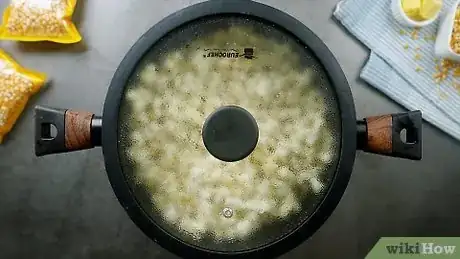

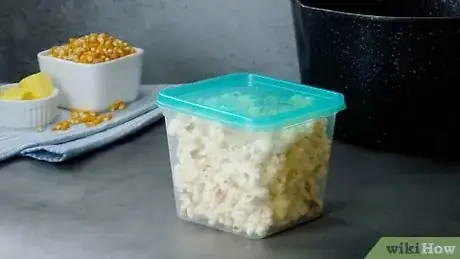
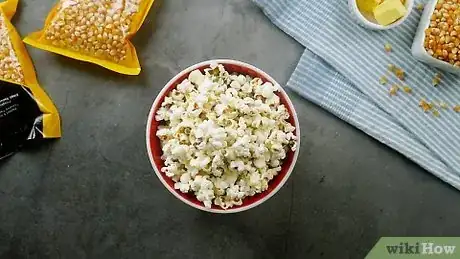

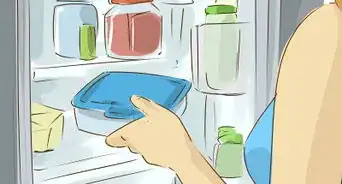
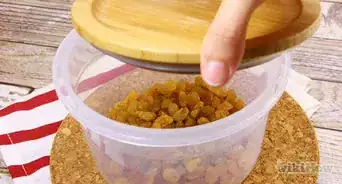

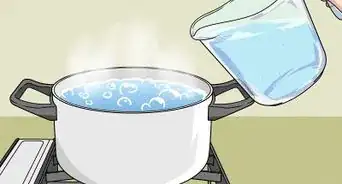

-Step-28-Version-3.webp)










